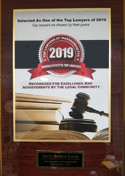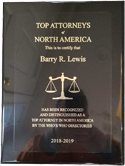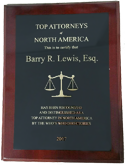1-800-348-6723
(Outside of Eastern and Central Massachusetts: 1-508-879-3262)

Case Law
SUSAN F. CHILD vs. JOSIAH H. CHILD, JR.
58 Mass. App. Ct. 76
September 11, 2002 - May 12, 2003
Suffolk County
Present: GREENBERG, SMITH, & GELINAS, JJ.
The appellate court found that the judge in a divorce action did not err with regard to his valuation of the marital home, but took into consideration the contributions of each spouse as well as other factors in existence at the time of the dissolution of the partnership.
Divorce and Separation, Division of property.
The judge in a divorce action did not err with regard to his valuation of the marital home, where the methodology on which the judge relied was not speculative, but rather took into consideration the contributions of each spouse as well as other factors in existence at the time of the dissolution of the partnership; further, the judge did not abuse his discretion in refusing to reopen the evidence with regard to the fair market value of the marital home, where the husband failed to present any new evidence by the deadline set by the judge, and, upon submitting new evidence, failed to submit an affidavit from his appraiser, as the judge also required. [78-82]
The judge in a divorce action did not err in valuing the husband's interest in two trusts of which the husband was the beneficiary as equal to the trust principal, where the husband stipulated to the value of the trusts. [82-84]
COMPLAINT for divorce filed in the Suffolk Division of the Probate and Family Court Department on September 2, 1998.
The case was heard by Jeremy A. Stahlin, J., and a motion to reopen the evidence was heard by him.
James S. Dittmar (Robert J. Rutecki with him) for Josiah H. Child, Jr.
Ellen S. Zack for Susan F. Child.
GELINAS, J. Josiah H. Child, Jr. (husband), appeals from a judgment of the Probate Court awarding certain property to Susan F. Child (wife), and from the denial of his motion to reopen the evidence. The husband does not appeal from the dissolution of the marriage, and, under Mass.R.Dom.Rel.P. 62(g) (1992), the parties' divorce became absolute on December 29, 2000. The property award, set out in sparse but appropriate findings, and partially based on a stipulation of the parties,
Page 77
reveals again the complexities that arise in attempting to fairly allocate property when parties separate. The husband claims error in four aspects of the judge's decision: (a) in the valuation assigned by the judge to the wife's life estate in the marital residence; (b) in the value assigned by the judge to two discretionary trusts; (c) in the treatment given by the judge to the husband's and wife's property interests; and (d) in the allocation that the judge made of the marital estate between the husband and wife. The husband also claims that the trial judge abused his discretion in refusing to reopen the evidence in order to take additional testimony on the value of the marital residence.
We recite the facts generally, reserving details for our discussion of particular issues. The husband and wife had been married for forty-eight years when, in September of 1998, the wife filed a complaint for divorce in the Suffolk Probate and Family Court. Three children were born of the marriage, all adult at the time of these proceedings. The parties had accumulated considerable property, by work, skill, and inheritance. Some months after the trial, which concluded in January of 2000, the husband filed a motion to reopen the evidence, asking that he be allowed to offer additional evidence with regard to the marital home, a fourteen-room penthouse cooperative apartment on Beacon Street in Boston. In September of 2000, the Probate Court judge issued a judgment of divorce nisi, together with a memorandum of decision. He denied the husband's motion to reopen the evidence. In November of 2000, the court issued a corrected memorandum of decision, eliminating the double counting of one asset, nunc pro tunc to September 29, 2000. This appeal followed.
A probate judge has broad discretion in awarding alimony and making equitable property divisions, but must consider "the length of the marriage, the conduct of the parties during the marriage, the age, health, station, occupation, amount and sources of income, vocational skills, employability, estate, liabilities and needs of each of the parties and the opportunity of each for future acquisition of capital assets and income." G. L. c. 208, ? 34, as appearing in St. 1989, c. 287, 59. In addition to these mandatory factors, "the judge may, in his or her discretion
Page 78
consider 'the contribution of each of the parties in the acquisition, preservation or appreciation in value of their respective estates and the contribution of each of the parties as a homemaker to the family unit.' " Drapek v. Drapek, 399 Mass. 240 , 243 (1987), quoting from G. L. c. 208, 34. The judge's findings must indicate that he or she has weighed all of the required statutory factors. Bianco v. Bianco, 371 Mass. 420 , 423 (1976). Where there is a question of valuation concerning a marital asset, a trial judge, when faced with conflicting expert evidence, may accept or reject all or parts of the opinions offered. Fechtor v. Fechtor, 26 Mass. App. Ct. 859 , 863 (1989), and cases cited. See Dewan v. Dewan, 30 Mass. App. Ct. 133 , 135 (1991). "[T]he judge may reject expert opinion altogether and arrive at a valuation on other evidence. Unless clearly erroneous, the trial judge's determination of value will stand." Fechtor v. Fechtor, supra at 863. (Citations omitted.) See Mass.R.Dom.Rel.P. 52(a) (1987). We consider the trial judge's findings and rulings with respect to valuation against this well rehearsed background.
1. Valuation of the cooperative apartment. The husband claims that the judge committed reversible error in three respects with regard to his valuation of the marital home: that he relied on a methodology that was speculative, that the valuation was without basis in the evidence, and that the valuation was inconsistent with a United States Treasury regulation on which the valuation was based. We address each, and conclude that there was no error.
In valuing the cooperative apartment, the judge essentially adopted the testimony of Edward Berger, the wife's expert. In arriving at his expert opinion of the value, Berger first accepted the estimate of the current fair market rental value of the parties' joint expert, Steven Elliot, who testified that the current rental value of the apartment was $7,500 per month. Berger then deducted the monthly charges of $3,403 that the wife was obligated to pay as a condition both of her retaining the life estate and the right to live in the apartment; the difference amounted to $4,097 per month. Berger then computed the present value of a single life annuity, paid to the wife for her lifetime, of $4,097 per month. The value of the wife's interest
Page 79
in the apartment thus achieved was $476,222. In his findings the judge accepted this method of valuation, but reduced the expenses, as he determined that the cost of heating the apartment had been double counted. The present value after this correction computed to $493,657.
The husband claims that this method of valuing the apartment is speculative, as the net income that might hypothetically flow to the wife from the rental of 81 Beacon Street for the rest of her life is at best contingent and there could well be changes in the rental value and the costs during her lifetime; and, further, that the wife was prohibited under her mother's will from renting the apartment for more than a period of two years, andthe opinion and facts relied upon by Berger were devoid of evidentiary support, as he had no information as to future fair market rental value and future expenses. We think that the judge was correct, and that the husband's arguments ignore the fact that the value of the wife's life estate must be taken at the time of divorce (or the time that consideration is given to the property division). "The underpinning of any order for division of property under 34 is . . . the judge's consideration of the contributions, in the statutory terms, of each spouse, as well as other factors in existence at the dissolution of the partnership which have been traditionally applied in determining alimony." Davidson v. Davidson, 19 Mass. App. Ct. 364 , 376 (1985). The trial judge has a certain flexibility in determining the exact date at which assets must be considered and valued. However, with exceptions not applicable here, asset valuation must relate to the parties' status within the marriage, or at the outside, at a time that relates to the court's division of the assets. See, e.g., Savides v. Savides, 400 Mass. 250 , 252-253 (1987) (assets valued as of the date of the parties' separation prior to the divorce; wife excluded from participation in the increase in value of the marital property where she made no contribution to the marriage after the date of separation and the increase in value was due solely to the husband's efforts); Pare v. Pare, 409 Mass. 292 , 296 n.4 (1991) (where property division takes place after the divorce is final, and postdivorce appreciation is not fairly attributable to one spouse alone, the correct procedure is to value the divisible property as of the date of the order of division
Page 80
and apportion postdivorce appreciation in the value of the property between the parties); Daugherty v. Daugherty, 50 Mass. App. Ct. 738 , 741-742 (2001) (value of husband's pension to be taken as of the date of the parties' separation, some ten years prior to the property division trial, with wife entitled to appreciation on that share only). To insist, as does the husband here, that the valuation must take into account potential future increases (or decreases) in the rental value and expenses, is to vitiate the partnership principle upon which property division is predicated. Compare Davidson v. Davidson, 19 Mass. App. Ct. at 370 ("To hold that property interests acquired after the dissolution of the marriage are subject to division under 34 would be contrary to the marital partnership concept on which 34 is founded"). Further, we find no merit in the husband's argument that the valuation was predicated on annuity tables established by the United States Treasury rather than on the table of values for life estates established in a similar Treasury regulation, as urged by the husband's expert. [Note 1] Here, there were substantial limitations on the wife's life estate. In order to avail herself of the life estate, and the concomitant right to live in the unit, the wife was required to pay all of the monthly expenses associated with the apartment. Her ability to rent the apartment was limited to a term of less than two years. Her mother's estate retained the right to sell the apartment, and in the case of a sale, the wife would lose the use of the apartment and would be entitled, under the mother's will, to receive only the income from one-half of the net sale proceeds. While styled a life estate, the wife's actual opportunity here was more in the nature of a limited tenancy at will, as distinguished from a traditional life estate, defined by the husband's expert as the "right to the use, possession, and income from a piece of property for the lifetime of an individual . . . ."
We discern no clear error in the valuation method adopted by the judge. In this case he was free to reject the opinion of the husband's expert and the valuation methods on which it was
Page 81
based, and to adopt that proffered by the expert for the wife. Fechtor v. Fechtor, 26 Mass. App. Ct. at 863.
The husband's argument that the trial judge abused his discretion in refusing to reopen the evidence with regard to the fair market value of the apartment is also without merit. The stipulated value of $2.3 million as the value of the wife's eleventh floor apartment was based in part on the sale of a comparable apartment on the tenth floor some two years prior to the stipulation, at a price of $1.8 million. As trial was concluding, the parties became aware of the pending sale of the tenth floor apartment. The husband requested that the trial judge leave open the evidence with respect to the value of the tenth floor apartment so that he might present additional evidence with respect to the value of the wife's apartment. The trial judge acquiesced, giving the husband leave to offer a motion to introduce additional evidence on or before January 21, 2000. [Note 2] No motion to introduce new evidence was filed until March 13, 2000, well beyond the deadline set by the court. The motion contained an affidavit from the husband averring that the tenth floor apartment was under agreement to be sold in April, 2000, for $3.17 million. The motion failed to include an affidavit from the appraiser, as required by the judge's order, although the husband averred that the appraiser's revised estimate of the value of the wife's apartment was $2.57 million.
In support of his claim of error, the husband suggests that he moved expeditiously to determine the terms of the sale of the tenth floor apartment, and to have the appraiser revise his figures based on the new information. In her opposition to the allowance of the motion, the wife filed an affidavit suggesting that the husband had attempted to use undue influence on the appraiser, Elliot, in order to have Elliot present a value that the husband thought appropriate.
We see no abuse of discretion in the judge's denial of the motion. The decision whether to admit additional evidence after
Page 82
the case is closed lies in the sound discretion of the trial judge. See Jones v. Vappi & Co., 28 Mass. App. Ct. 77 , 83 (1989), and cases cited. Here, while maintaining that he acted expeditiously in assembling evidence of a value different from that stipulated, the husband offers no reason why the motion and affidavit of the appraiser could not have been filed on or before the date due, even if all of the information necessary for a hearing on the motion would not be forthcoming until a later date. By the date specified in the judge's order, the husband had at least some evidence that the agreed-upon sale price of the property on the tenth floor far exceeded its sale price some three years before. Nor does the husband offer any reason for failing to submit an affidavit from the appraiser when the motion was finally filed some two months later. Finally, the trial judge had determined the value of the apartment essentially based on its present fair market rental value; nothing in the husband's arguments below, or before this court, suggest that the fair rental value of the property, forming the basis of the economic value of the property to the wife, would have differed based on a different or higher market value of the apartment itself. The record is clear that the appraiser determined the fair rental value based on comparable rental values at the time of the appraisal. The husband's argument with respect to a change in value prevails only if his theory of the value of the wife's life estate is adopted, a theory which the judge rejected. The judge did not abuse his discretion in refusing to reopen the evidence.
2. Valuation of the trusts. The husband's claim, that there was error in the valuation of two trusts of which he was beneficiary, is also without merit.
Two trusts in favor of the husband, styled the Parkinson Trust and the DeBonand Trust, were included in the list of marital assets to be divided. Under the provisions of the Parkinson Trust, the trustees had sole discretion to distribute income and principal to the husband or for his benefit. The DeBonand Trust required that the trustees distribute the income to the husband; they were given the sole discretion to distribute the principal to him or for his benefit. The husband claims error in the fact that the trial judge valued the husband's beneficial interest in both of the trusts as equal to the trust principal, maintaining that, as to the
Page 83
Parkinson Trust, he had no "present, enforceable, equitable right to use the trust property for his [own] benefit," Lauricella v. Lauricella, 409 Mass. 211 , 216 (1991), and as to the DeBonand Trust, those rights were limited to distribution of the trust income. In compliance with Rule 401 of the Supplemental Rules of the Probate Court (1997), [Note 3] the husband filed a financial statement that included among his assets the principal values of the trusts, values that were later submitted to the court in a stipulation signed by both parties. Nowhere in the record is there evidence that the husband attempted to provide evidence or argument for a different, reduced value of the assets, based on the provisions of the trust instruments, as he now attempts to do on appeal. [Note 4] The record rather shows that the husband, in
Page 84
testimony offered on cross-examination, confirmed the value of the assets as being their principal value. "The general rule is that an issue not raised in the trial court cannot be argued for the first time on appeal." M.H. Gordon & Son v. Alcoholic Bevs. Control Commn., 386 Mass. 64 , 67 (1982). We see no reason to exercise our discretion to consider the issue of valuation here, as it does not raise "important questions of public interest." Filippone v. Mayor of Newton, 392 Mass. 622 , 627 n.8 (1984). The trial judge was well within his discretion in adopting the husband's stipulated statement of the values of the trusts. [Note 5]
The husband's remaining contentions of error are without merit: we conclude that the trial judge was well within his discretion in establishing the property division award in this case. We do not reverse a property division judgment unless we find it "plainly wrong and excessive." Baccanti v. Morton, 434 Mass. 787 , 793 (2001), and cases cited. The court's valuation of the various assets of the parties was amply supported by evidence presented by the parties. The court arrived at a fifty-fifty division of the assets, reasoning that, as many of the parties' assets were held in discretionary trusts, a precise percentage allocation was not possible, and that the assets should be left so that the parties would each retain assets in their own name, even though he concluded that, based on the relative contributions of each to the marriage and on the husband's conduct during the latter stages of the marriage, a sixty-forty division in favor of the wife might have been appropriate. [Note 6] Our review of the record clearly shows that, both in the determination of values
Page 85
and in the ultimate division of the assets, the trial judge properly exercised his discretion. See Baccanti v. Morton, 434 Mass. at 793; Fechtor v. Fechtor, 26 Mass. App. Ct. at 863.
Judgment affirmed.
FOOTNOTES
[Note 1] The amount by which the value would have improved had the Treasury regulation relating to life estates been used, rather than that relating to annuities, is not clear from the record. The husband maintains that there would have been an appreciable difference.
[Note 2] The judge's order, entered January 9, 2000, reads: "The husband may, on or before January 21, 2000, file a motion for leave to present additional testimony from the real estate appraiser who testified earlier, on the grounds that the appraiser has a new opinion as to fair market value, provided the motion is accompanied by an affidavit from the appraiser."
[Note 3] Rule 401 provides in relevant part: "(a) Except as otherwise ordered by the court, each party to a divorce or separate support action or any other action where financial relief is requested, shall file with the court and shall deliver to the other party within 45 days from the date of the service of the summons, a complete and accurate financial statement showing, insofar as possible, the assets, liabilities and current income and expenses of both parties and children involved in the case."
[Note 4] We agree with the husband's argument on appeal that, with the exception of his right to receive income from the DeBonand Trust, he does not appear to have a "present, enforceable, equitable right to use [either of] the trust propert[ies] for his benefit." Lauricella v. Lauricella, 409 Mass. at 216. But see Comins v. Comins, 33 Mass. App. Ct. 28 , 30-31 (1992). However, this fact would not be conclusive in the judge's determination of what portion of the trust res to include or the value to be placed thereon. "In making the determination of what to include in the estate, the judge is not bound by traditional concepts of title or property. 'Instead, we have held a number of intangible interests (even those not within the complete possession or control of their holders) to be part of a spouse's estate for purposes of ? 34.' " S.L. v. R.L., 55 Mass. App. Ct. 880 , 882 (2002), quoting from Baccanti v. Morton, 434 Mass. 787 , 794 (2001).
We take no position on whether the husband might have prevailed had he raised the issue at trial. A cursory review of the trust instruments suggests that the husband's interest in the trust principal of both trusts might well be interests which are "too remote or speculative" to be included in the marital estate, S.L. v. R.L., supra at 882, and do not present any opportunity for future acquisition. See Williams v. Massa, 431 Mass. 619 , 628-629 (2000). We merely suggest that, given the fact that our expansive view of the marital estate of a party to a divorce may include a beneficial interest in a trust, notwithstanding that distribution of that interest has not occurred and may be conditioned on factors outside of the spouse's control, see Lauricella, supra at 216, exclusion of the principal of the trust res, or inclusion of the principal at a different and lower value, is not a foregone conclusion based upon the husband's seeming lack of a "present, enforceable, equitable right to use the trust property for his benefit." Ibid.
[Note 5] The husband also argues that the judge treated the wife's trusts differently from those of the husband in the valuation process. Our review of the record suggests that there was substantial evidence supporting the valuation assigned to her trusts.
[Note 6] In his memorandum of decision, the judge included two charts showing the values of the husband's and wife's assets. The first chart showed asset values before adjustments for, e.g., taxes and limitations on the wife's right to income from her trusts. In this chart, the ratio of the relative values of the husband's and wife's assets was roughly forty-sixty. In the second chart, adjusting the values of the wife's assets for the "present value of the income only entitlements," the ratio became roughly fifty-fifty.
The Divorce Law Specialists - Office Locations
Areas of Service include but are not limited to the cities and towns listed below.
Click on a town for easy-to-follow directions.
Beverly, Boston, Braintree, Burlington, Cambridge, Framingham, Hyannis, Mansfield, North Andover, Westboro
1-800-348-6723 or 1-508-879-3262
Home Page • Our Law Offices • About You • Family Law • Resources • FAQs • Other Services • Contact Us
MAJOR CREDIT CARDS ACCEPTED
Copyright © 2002-2025 The Law Offices of Attorney Lewis • All Rights Reserved
1-800-348-6723 • BRL1963@gmail.com







